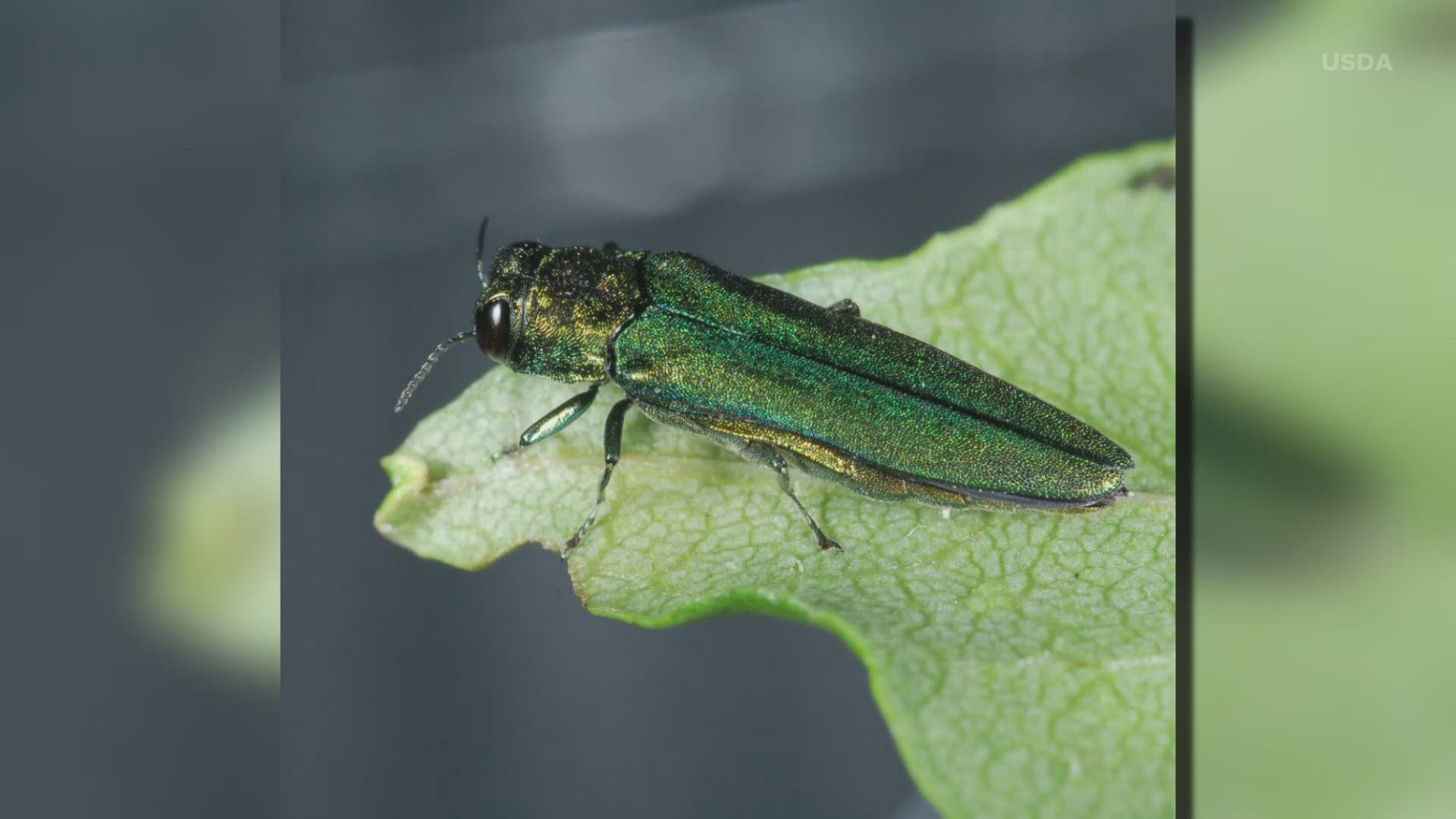MCLENNAN COUNTY, Texas — Texas A&M Forest Service is warning about a tree-killing beetle that was recently discovered in McLennan County.
The insect is called the emerald ash borer (EAB) and it's considered to be one of the most invasive pests in the country, already reportedly killing tens of millions of ash trees. It's metallic green in color and is non‐native to the United States, which means the trees have no defenses against the bugs. The beetle was first detected in Texas in 2016 and has slowly spread further south, according to the Texas A&M Forest Service.
"We are concerned," said Allen Smith, the Regional Forest Health Coordinator for the Texas A&M Forest Service. "Ash is a very important urban landscape tree. It's planted in a lot of yards and subdivisions and things like that. In the woods, it's an important component of our natural environment. If we lose ash out of the food web or the ecosystem, then that crashes and we lose important pollinating butterflies, we lose some important species."
Smith said the beetle is so destructive that once it gets going, it's hard to save the trees and prevent the spread of the beetle even further. It's one of the reasons why the EAB is a regulated pest in Texas.
"If an ash tree comes into contact with it, it's pretty likely that that ash tree is going to die," Smith said. "The Texas Department of Agriculture regulates the movement of the host of ash material in and out of infested counties. Once McLennan County is verified as infested with emerald ash borer, there's technically a state quarantine put on those counties for the movement of ash wood. We encourage people to not move firewood around from place to place.
Texas A&M Forest Service sets around 500 traps annually that detect EAB. Smith said that's usually how the spread or new specimens are detected. However, the case in McLennan County was slightly different.
"There was an entomologist that was doing some aquatic entomology work out at Lake Waco, and he caught several of them," Smith explained.
Texas A&M Forest Service has been checking their traps weekly for further spread of EAB in McLennan County, but Smith said so far there hasn't been anything new. With McLennan County joining the list of infested counties in Texas, Smith believes the expansion south shows it's from human activity.
"That's most likely due to people either moving firewood around unintentionally or wood tree trimmers, utility line trimmers, getting infested trees and then going into another town to do some work," Smith explained. "Step one, don't move firewood around."
The ash trees die because the EAB larva feeds underneath the bark of the ash trees, chewing through the living tissue layer.
"That's the layer that the tree uses to feed, water itself, so basically they cut off its food and water supply, and the trees starve to death," Smith explained.
Symptoms of an infestation may include any or all of the following: dead branches near the top of a tree, leafy shoots sprouting from the trunk, bark splits exposing larval galleries, extensive woodpecker activity and D‐shaped exit holes.
If you believe you have EAB, or would like to manage the EAB on your property, reach out to your local Texas A&M Forest Service office or a certified arborist.
More from 6 News:

